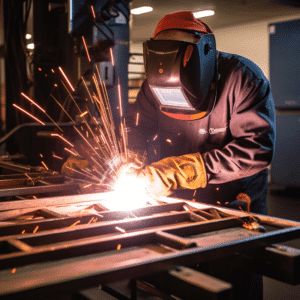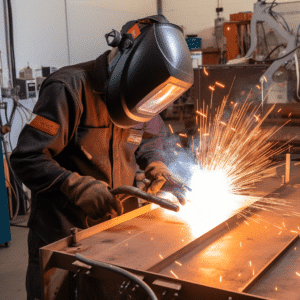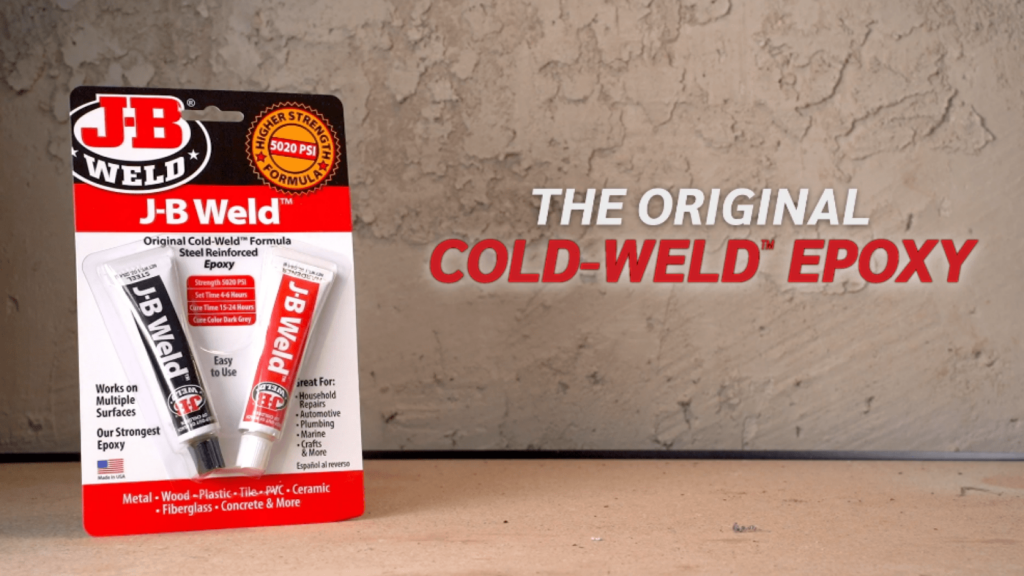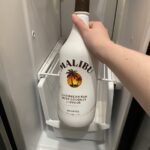JB Weld Cure Times and Temperature are two highly crucial things when it comes to repairing broken parts of metal. Even though they are both different, they do have a very strong connection. So, if you’re considering using JB weld, you need to have a clear understanding of JB weld cure time vs. temperature.
While JB weld is an essential product for repairing metal surfaces, you might be wondering about the appropriate time and temperature for JB. In this article, we will discuss the exact time and temperature for the JB weld. So let’s get started.
Table of Contents
JB Weld Cure Time Vs Temperature: Overview

JB is a popular solution for epoxy repair of broken parts of metal. This repair method involves specific time and temperature. The moisture basically evaporates from JB weld glue at a definite temperature in order to strengthen the bond. You will also have to leave the glue for a specific time to make it harden. But let’s explore more.
What You Need to Know About Jb Weld Cure Time
As a user of JB weld, it’s important to have a clear idea of Jb weld cure time. You have to determine which time is ideal for the Jb weld cure, considering that cure time can vary subject to different temperatures. So you need to have a clear idea concerning the Jb weld cure time.
For great repairing and bonding, Jb weld cure time measurement is an imperative fact. At the very beginning of the project, you have to make a bond of steel glue with hardener glue. Then set the glue on your essential metal and leave it for 4-6 hours to completely dry.
Note that this 4-6-hour period is effective at the normal temperature; otherwise, cool temperatures require more time. Authentic Jb weld has been proven to keep its characteristics up to 67 degrees Fahrenheit. Thus, it may take a little longer to cure if you’re using it in cold temperatures.
In other words, Jb weld works faster if applied in a room with a temperature above 50 Fahrenheit. After it has been cured for 4-6 hours, you may consider placing a lump or light bulb near the weld to speed up drying time. A harder and fully cured bond will require you to measure the time perfectly.
Can You Speed Up the Jb Weld Cure?
Of course, yes. You can speed up the Jb weld cure time in the following ways.
First, you can apply extra heat to speed up the process. The bond should be left at a high temperature for this to be effective. It’s one of the most straightforward methods to speed up the Jb weld cure time.
The next method is to increase the amount of hardener. When mixing the steel with hardener, consider using extra hardener so that the Jb weld can be cured faster.
The third method is by mixing baking soda with glue. It still works and your Jb weld could be cured very early by this way. Moreover, as hinted before, you can use a heat lamp, light bulb, or heat gun to speed up the Jb weld cure.
However, this particular type of technique should be used after at least six hours. Simply place the heat lamp or heat gun near the weld.
Jb Weld Cure Temperature
Jb weld requires a definite temperature to be properly cured. While the curing process can vary at different temperatures, specific metal needs a fixed temperature. For instance, steel, iron, and such kinds of metal require high temperatures to be cured.
How Do You Measure Jb Weld Cure Temperature?
Measuring Jb weld cure temperature is not that hard at all. In fact, the question should be why should you measure the Jb weld cure temperature? Well, it’s important for determining the appropriate temperature for individual metals.
Generally, Jb weld requires 4-6 hours to set at the normal temperature. That means you can choose the normal temperature. But if you need the weld to be cured faster, then you can increase the heat.
If you’re working at a cold temperature, then keep in mind that the Jb weld will take more time to cure than it would at normal temperatures. It can last anywhere from 15-24 hours to be cured at a cold temperature. For a faster curing process, consider using Jb weld in a room with at least 50 degrees Fahrenheit heat.
Jb Weld Enduring Temperature
There is really no specific range of temperature that can be endured by the Jb Weld. It can withstand very high temperatures and still tolerate very low temperatures. Perhaps that’s the reason why users choose Jb weld for a variety of work and projects.
Technically, it can endure up to 550 degrees Fahrenheit or 287 degrees Celsius after being fully cured. That means you can use Jb weld for high heat projects such as engine repairs and many more.
Meanwhile, the Jb weld can endure down to minus 67 degrees Fahrenheit or minus 55 degrees Celsius. Meaning, you can use this product for cold temperature projects as well. You can use it for outdoor projects, even during the winter period.
If you want more strength, experts suggest that you use a slower curing process. A slower cure is often associated with long-lasting results and can be significantly stronger than a fast cure.
JB Weld Dry Time
JB Weld is a crucial product for broken metal surface repair. The repair method includes a certain time and temperature. The process entails moisture evaporating from the glue at a particular temperature resulting in a stronger bond, while the glue requires a specific time to harden.
The JB dry time is the time given to the bond of steel mixed with glue after setting it on the metal to fully dry and considering normal temperature; it takes 4-6 hours for a complete dry. For colder temperatures, it takes longer, like 15- 24 hours.
How Long Does JB Weld Take to Dry?

When using JB weld, it is paramount to clearly understand how long it takes to dry and establish which time is convenient for JB weld to cure because its curing time varies based on the differing temperatures.
To achieve great results in the repairing and bonding process, a JB weld measurement of 1:1 is an imperative fact. Therefore, it is good that you measure out equal parts of the epoxy and glue before thoroughly blending them to create a permanent bond.
After setting the glue on your significant metal, let it set for 4-6 hours to dry at the normal room temperature. It is a fact that JB maintains its characteristics up to 67 degrees F. Therefore, if the temperatures are cold, it will take more time and quicker if applied at a room temperature above 50 F.
How to Cure JB Weld Faster
As cold temperature derails the curing time, you can speed it up through various ways such as:
Apply extra heat- One of the straightforward methods is to place a lamp, heat gun, or light bulb near the weld to speed up the drying process. However, this technique should be applied after at least six hours.
Increase the hardener- Consider using an extra hardener to fasten the JB weld drying process during mixing.
Mixing baking soda with glue is another way to cure the JB weld quickly.
The Bottom Line
All things considered, the Jb weld process of repairing is easier than the conventional welding process. It is incredibly durable and highly resistant to extreme temperatures.
You can count on this repairing process to make your metals as good as new. We now hope you have a clear concept about Jb Weld Cure Time vs. Temperature. We’re positive that you will be able to measure the perfect time and temperature in your next Jb weld project.


